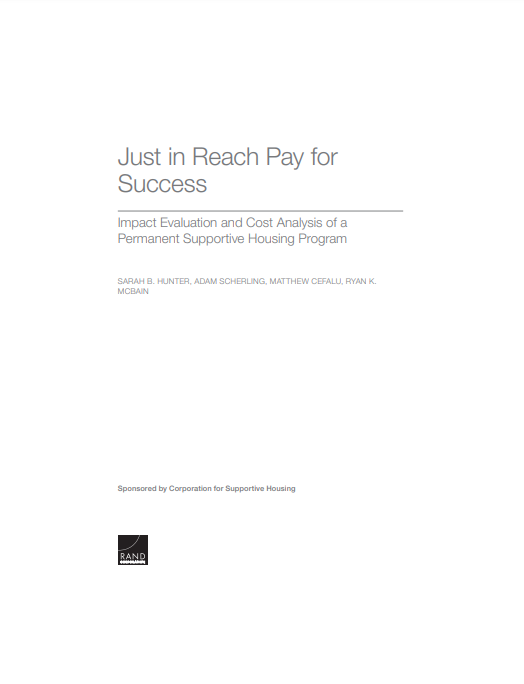Headline
A jail screening and post-release permanent supportive housing (PSH) program is associated with fewer inpatient visits, more mental health outpatient visits, and overall cost savings.
Context
Individuals returning to communities following incarceration are especially likely to experience barriers to accessing housing, largely due to myriad state and federal laws that restrict access to housing based on criminal legal system involvement. These barriers exacerbate the broader links between housing insecurity, physical and behavioral health needs, and criminal legal system involvement.
In 2017, Los Angeles (LA) County implemented the Just in Reach Pay for Success (JIR PFS) project, a jail screening and post-release PSH program for individuals in LA County jails. This study assesses the impact of the JIR PFS program health and homeless service use, as well as overall cost savings.
Findings
The authors compared a sample of over 300 program participants with a comparison group of similarly eligible individuals in LA County jail who were not assigned to the program. The program was limited to individuals with a history of experiencing homelessness, and who had one or more chronic behavioral or physical health conditions. The study found that program participation was associated with reduced inpatient and homelessness service use, increased outpatient Department of Mental Health service use, and an 82% housing stability rate after 12 months. Program participation was also linked to a decrease in the average number of days spent in jail. Finally, the authors found that cost savings generated from the program mostly offset the program’s costs, with a confidence interval ranging from 42% to 113% of the program’s costs.
Takeaways
This evaluation demonstrates that programs like JIR PFS can successfully facilitate access to stable housing and reduce inpatient service use. The substantial increase in outpatient Department of Mental Health service use suggests the program was successful in connecting individuals to care after leaving jail. Health care and correctional stakeholders can look to this program’s strong outcomes and promising evidence of cost savings to make the case for implementation of similar programs in their communities.

